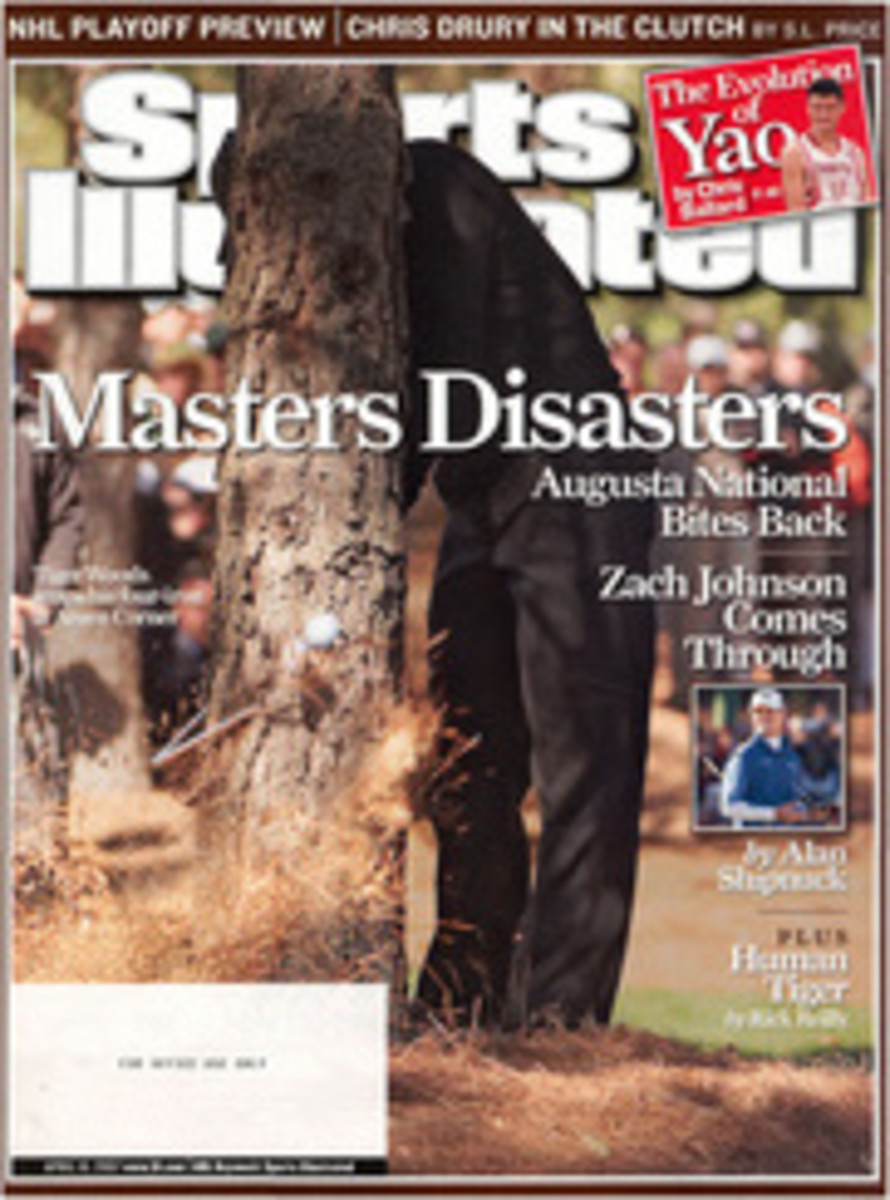
Color Code
There's somethinginteresting about watching crowds of African-Americans follow Tiger Woodsaround Augusta National on Easter weekend. When Woods, the son of a blackfather and Thai mother, arrived on Tour, many of us in black America believedthat he was going to be our golfing messiah. When his father, Earl, told SI in1996 that his son was "the chosen one," we thought Tiger had come tosave us, to show the way toward more opportunities to play the game and succeedin the golf industry.
We knew of thesport, but our knowledge was gained mostly from the fringes, as caddies, cooksand butlers. A few brave souls in the professional ranks--Charlie Sifford, LeeElder, Calvin Peete, Jim Thorpe--had given us hope, but golf hadn't birthed ablack champion on par with Muhammad Ali, Arthur Ashe, Joe Louis, JackieRobinson or Bill Russell.
Then Woodsperformed his miracle: a 12-shot win at the 1997 Masters against the bestplayers in the world. Suddenly, every sports section in the country had aheadline trumpeting Tiger, the first African-American to win a majorchampionship--the Masters, no less. Woods became the hot topic in blackbarbershops and beauty salons, and Jet and Ebony featured him in their pages.At last we had a golf champion we could call our own. He made us proud to beblack.
But almost assoon as the coronation ended, the 21-year-old king threw off the crown, tellingus that he was not black, but something he termed "Cablinasian" (a mixof Caucasian, black and Asian). Sure, he did a few Nike commercials with blackgolf pioneers in which he famously stated that "there are still golfcourses that I can't play," but he has been mostly silent on racial mattersand distant from black America throughout his 10-year run as the best golfer inthe world.
After Robinsonintegrated the major leagues 60 years ago, he became a champion of civilrights. Until his death in 1972 he campaigned for the hiring of black managersand general managers. He understood that as a black man with influence, he wasexpected to serve his people. Tiger seems to carry no part of that burden.Instead, he has poured his energies into winning tournaments, makingappearances for his sponsors and developing plans to construct courses fundedby oil money. While it's not Tiger's sole responsibility to effect change, the12-time major champion should do more than build a $25 million learning centerin Anaheim while the kids who need help the most live in inner-city areas likeCompton, East L.A. and Watts.
During Woods'sreign the number of black golfers has increased--from an estimated 500,000 in1996 to almost three times that number today. Still, other than Tiger, noAfrican-American has held a PGA Tour card since Thorpe left in 1998. Tim O'Nealis the only black on the Nationwide tour, a mere handful of blacks can be foundon the Hooters tour, and there is not a single African-American in any top 20college program. Few blacks hold top positions in the golf industry. LeonGilmore, the head of the Champions tour's Charles Schwab Cup, and Keith Newton,the Champions tour's director of tournament operations, are the onlyinfluential blacks working for the PGA Tour.
The changes wehoped for in 1997 have not materialized, but people of color still follow Tigeras he strides the golf courses of the world. Like the crowds that followedJesus from Galilee to Jerusalem, all they have is their belief in him. Untilsomething more authentic comes along, Tiger is their best hope.
TRUST ME
by RICK LIPSEY
Augusta members will realize they've gone too far anddial back the course next year.
New Math
Congressional will host Tiger Woods's AT&T National
BIG-MONEY SPONSOR - AVENEL REBUILD + TRADITION +LIMITED FIELD * TIGER = CUSHY HOME
PHOTO
JOHN BIEVER (WOODS TOP)
TOO QUIET A decade after what was supposed to be a breakthrough win, Woods was silent on and off the course.
FIVE PHOTOS
COURTESY AT&T (LOGO); DON RYAN/AP (CONSTRUCTION SITE); DOUG MILLS/AP (ERNIE ELS); ROBERT BECK (WOODS BOTTOM); STEVE HELBER/AP (CONGRESSIONAL)
PHOTO

